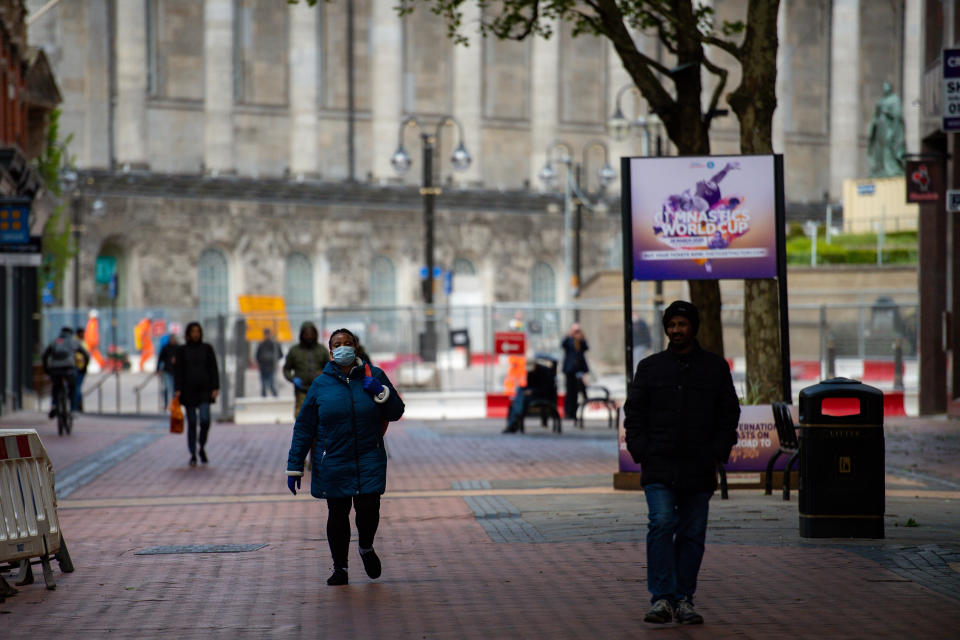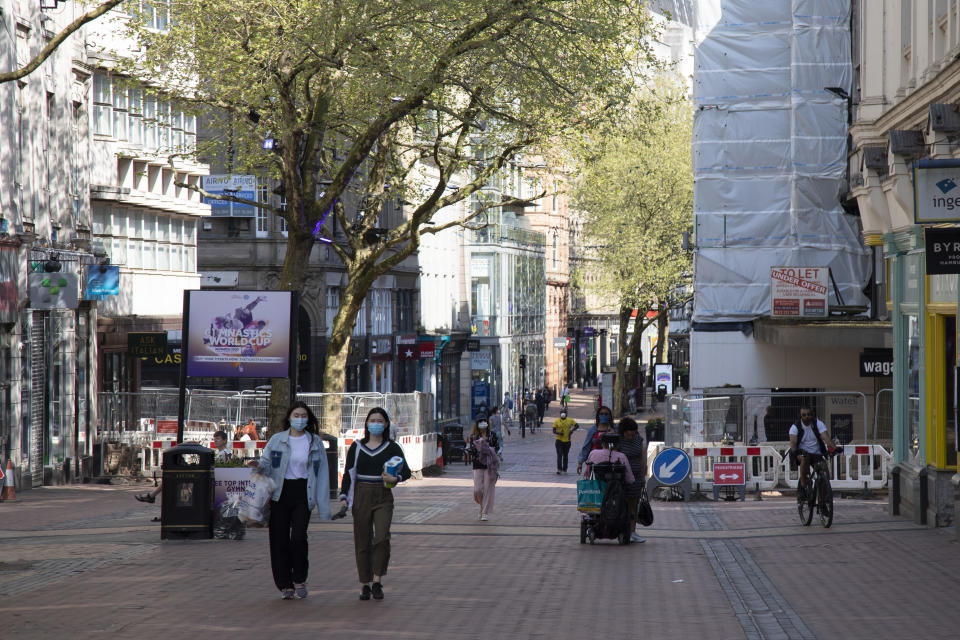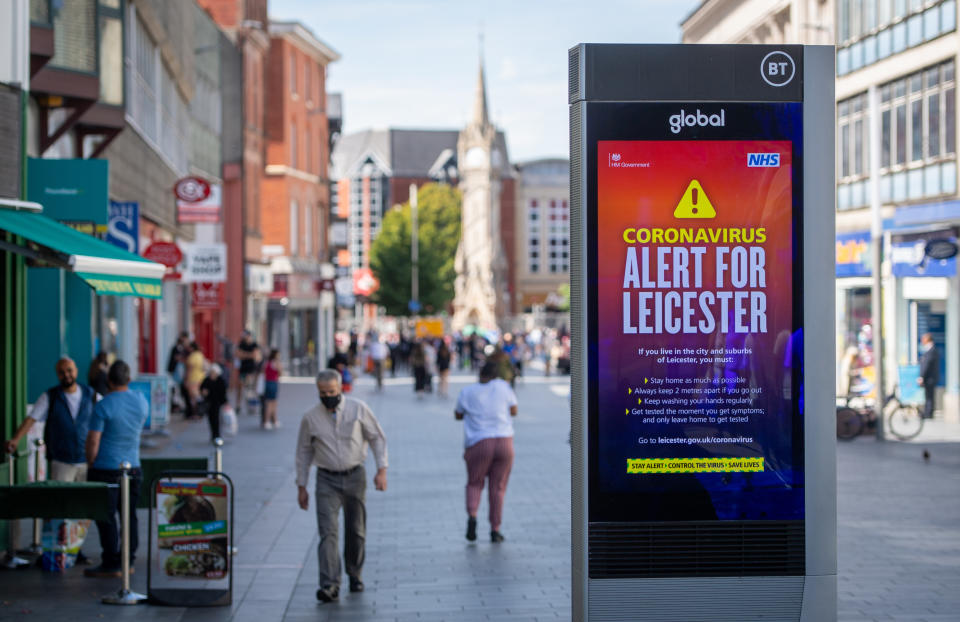Birmingham's infection rate has more than doubled in a week

Birmingham’s coronavirus infection rate has doubled in one week as fears grow that the city might be at risk of a local lockdown.
Some 321 new cases have been recorded in the city over the last seven days.
Dr Justin Varney, Birmingham’s director of public health, said it was likely the city would feature in the national “watch list” of places most at risk of intervention within days.
There is no sign of the current rise in cases easing off, he said.
"We could very easily be in a situation like we have seen in Leicester and Greater Manchester," Varney added.
At the start of August, Birmingham had an infection rate of around 12 cases per 100,000 of the population.
That rose to 24 by the end of last week, and on Monday stood at “around 30”, Varney said.

“There has been a real rise in infection transmission. If we have to go back into lockdown local businesses will suffer too,” Varney said, according to Birmingham Live.
“It's about jobs, about kids being able to get back to school – the decisions we make now have an impact on all of those things.”
Boris Johnson has ordered parts of the north of England back into partial lockdowns in a bid to stop a second wave of coronavirus following a surge in cases.
Read more: The ‘areas of concern’ at risk of local coronavirus lockdown
On Saturday, West Midlands Police discovered more than 300 people at an illegal rave in Birmingham city centre, one of 80 gatherings the force said it had had to deal with over the weekend.
On Friday, council leader Ian Ward urged people to adhere to social distancing.
“People right across Birmingham and the wider West Midlands still have a huge part to play if we're going to avoid a further lockdown,” he said. “We can't afford to drop our guard now.”
Can you believe it....officers are clearing a group of over 300 people at an illegal rave in the city centre. This will not be tolerated! pic.twitter.com/bzSAJD0sOc
— T/Superintendent Jack Hadley (@JackHadleyWMP) August 15, 2020
Public Health England data on Monday showed coronavirus cases had reached worrying levels across the north of England.
In the past week, there have been 69 cases per 100,000 in Blackburn with the nearby town of Darwen having now surpassed Leicester.
A number of local coronavirus outbreaks have been identified since some lockdown restrictions were eased across the UK.
Read more: UK facing 'major outbreak' of coronavirus as disease spreads
Leicester was the first city subjected to a local lockdown after a spike in cases, on 29 June.
Earlier this month, the government announced that parts of the city would be released from lockdown, while a “targeted” approach would see pockets remain under tighter restrictions.
The infection rate in Leicester has now fallen to 50 cases per 100,000.
On July 30, that local lockdown was lifted in part with pubs and restaurants allowed to re-open but some restrictions remaining in the city.

A watchlist of local councils that forms part of a weekly report of coronavirus infections by Public Health England (PHE) helps the government track spikes in COVID-19 cases across the country.
The government’s strategy is now to use “local interventions” to target the worst-affected areas, bringing in localised restrictions to curb the spread of the virus and prevent the whole country from going back into lockdown.
Read more: The areas with the highest number of new coronavirus cases in England
Newark and Sherwood in Nottinghamshire is the latest region added to the list following a rise in reported infections.
The area has now been deemed an “area of concern” in the new report released by PHE.
Coronavirus: what happened today
Click here to sign up to the latest news and information with our daily Catch-up newsletter

 Yahoo Sports
Yahoo Sports 